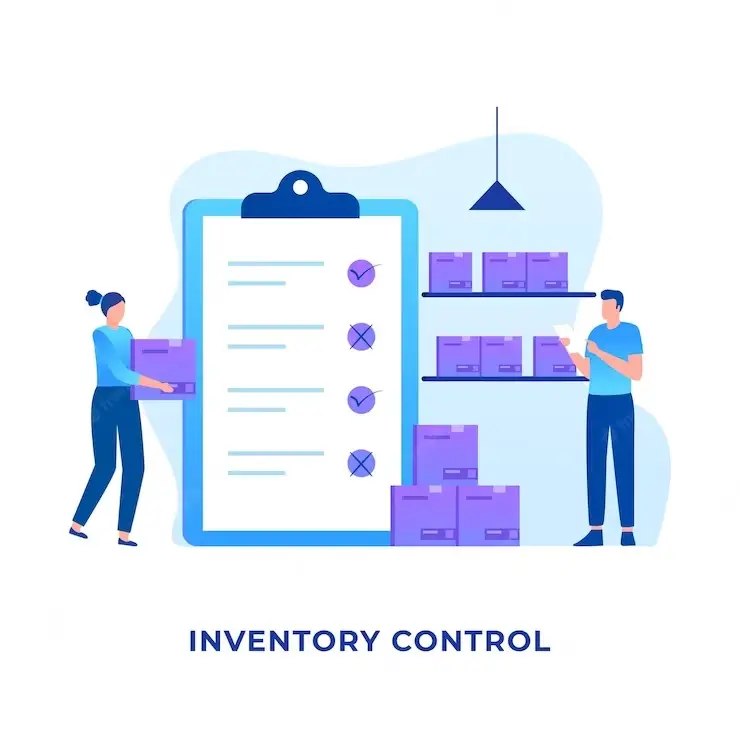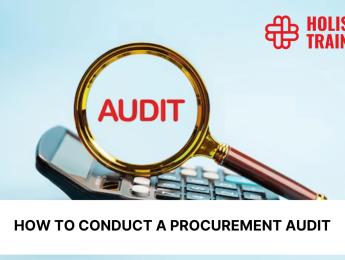Introduction
What Is Inventory Management?
Key Aspects of Inventory Management
Why Is Inventory Control Important?
What Is Stock Control?
The Role of Stock Control
Best Practices for Small Businesses and Retail Stores
Conclusion
Introduction
Efficient inventory management and stock control are crucial aspects of running a successful store, regardless of its size or industry. From small businesses to large retail establishments, having a robust system in place can significantly impact profitability and customer satisfaction. In this blog post, we will explore the concepts of inventory management and stock control, understand their importance, and discuss effective techniques and best practices that can be implemented by small businesses and retail stores.
What Is Inventory Management?
Inventory management refers to the process of overseeing and controlling a company's inventory of products. It involves efficiently tracking, organising, and managing the flow of goods from procurement to storage, and finally to the point of sale or fulfilment. Effective inventory management ensures that a business has the right quantity of products at the right time, minimising stockouts, excess inventory, and associated costs. In fact, by effectively managing inventory levels to minimise stockouts and overstocks, businesses can achieve a significant 10% reduction in inventory costs, according to Netstock.
Key Aspects of Inventory Management
Inventory management is a multifaceted process that involves several key aspects, each playing a crucial role in the efficient functioning of a business. Let’s delve into these aspects to gain a comprehensive understanding of the nuances involved in effective inventory management.
1. Procurement
The procurement phase is where the foundation of inventory management is laid. It's not merely about purchasing products; it’s about strategic decision-making. Businesses need to identify reliable suppliers, negotiate favourable terms, and establish strong relationships. Negotiating bulk discounts, favourable credit terms, and timely deliveries are essential elements of efficient procurement. Furthermore, businesses must constantly evaluate the performance of their suppliers to ensure consistent quality and reliability.
2. Storage
Storage is more than just finding a place to keep products; it's about ensuring the safety, quality, and accessibility of inventory. The choice of storage solutions depends on the nature of the products. Perishable goods might require refrigeration, while fragile items might need specialised packaging. Businesses also need to implement efficient shelving and stacking systems to maximise space utilisation and prevent damage during handling. Proper storage conditions prevent spoilage, breakage, or theft, ensuring that products are in optimal condition when they reach the customers.
3. Inventory Tracking
Accurate and real-time inventory tracking is the backbone of effective inventory management. Manual methods have been largely replaced by technology-driven solutions such as barcoding and RFID (Radio-Frequency Identification). These technologies enable businesses to track products from the moment they arrive in the inventory to the moment they are sold. Automation not only reduces the chances of human error but also provides instant updates on stock levels, allowing for timely reordering and preventing stockouts.
4. Order Fulfilment
Order fulfilment is a critical aspect where customer satisfaction is directly at stake. It involves accurately picking products from the inventory, packing them securely, and dispatching them in a timely manner. Efficient order fulfilment systems ensure that customer orders are processed swiftly, reducing lead times and enhancing customer experience. Integration with delivery services and real-time tracking mechanisms further improve the efficiency of the fulfilment process.
5. Inventory Analysis
Continuous analysis of inventory data is essential for making informed decisions. Businesses need to regularly analyse sales trends, historical data, and customer preferences. Advanced data analytics tools provide insights into which products are performing well and which ones are lagging. This analysis guides decisions related to restocking, identifying slow-moving items that might need promotional strategies, and forecasting demand patterns. By leveraging big data analytics, businesses can adapt swiftly to market changes and customer demands, gaining a competitive advantage.
Understanding these key aspects and their interconnections is pivotal for businesses aiming to master inventory management. It's not a one-size-fits-all approach; rather, it's a dynamic and adaptive process that requires constant monitoring, analysis, and strategic decision-making. By embracing these complexities and implementing robust inventory management strategies, businesses can optimise their operations, reduce costs, and deliver exceptional value to their customers.
Why Is Inventory Control Important?
Effective inventory management is the cornerstone of a well-oiled business operation. It's not just about having products on the shelves; it's about strategic control and optimisation. Let’s explore the myriad benefits that effective inventory management brings to businesses, shaping their success in the competitive marketplace:
Meeting Customer Demand
One of the primary benefits of effective inventory management is the ability to meet customer demand promptly and efficiently. By maintaining optimal inventory levels, businesses can fulfil customer orders promptly and prevent stockouts. This enhances customer satisfaction, loyalty, and positive word-of-mouth, which in turn attracts more customers, according to LPC.
Cost Management
Efficient inventory management directly impacts a company’s financial health. On one hand, excessive stock ties up capital that could be used elsewhere in the business. On the other hand, stockouts lead to lost sales and missed revenue opportunities. Effective inventory control strikes the right balance, reducing carrying costs associated with excess inventory while preventing revenue losses due to stockouts. It also minimises costs related to storage, insurance, and obsolescence, contributing significantly to cost management and profitability.
Supply Chain Optimisation
An optimised supply chain is essential for seamless business operations. Effective inventory management facilitates streamlined interactions between suppliers, manufacturers, and distributors. By ensuring that the right amount of inventory is available at the right time, businesses enhance coordination and reduce lead times. This not only improves overall efficiency but also strengthens relationships with suppliers, leading to more favourable terms and better collaboration in the long run.
Forecasting and Planning
Data is invaluable in the world of business, and effective inventory management provides businesses with accurate and actionable data. By analysing historical sales data and trends, businesses can make informed decisions about future demand. This data-driven approach aids in precise demand forecasting, enabling businesses to optimise procurement decisions, reduce wastage, and fine-tune production and distribution processes. It ensures that resources are allocated efficiently, preventing unnecessary surpluses or shortages.
Minimising Waste and Spoilage
For businesses dealing with perishable or time-sensitive products, effective inventory management is crucial in minimising waste and spoilage. By monitoring expiry dates and consumption patterns, businesses can rotate stock effectively, ensuring that older products are sold before new ones. This reduces waste and prevents financial losses associated with unsold perishable goods. It also contributes to sustainability efforts, promoting responsible business practices.
Enhancing Supplier Relationships
Maintaining optimal inventory levels allows businesses to negotiate better terms with suppliers. When a business consistently places accurate orders, suppliers are more likely to view them as reliable partners. This can lead to discounts on bulk purchases, better credit terms, and priority access to new products or limited editions. Strong supplier relationships contribute to a more stable supply chain and ensure that the business has access to the best products at competitive prices.
Improved Decision Making
Accurate, real-time data provided by effective inventory management systems empowers businesses to make informed decisions. Managers can analyse inventory turnover rates, identify top-performing products, and assess market demand trends. This data-driven decision-making process guides strategic choices such as product diversification, marketing campaigns, and pricing strategies. It ensures that businesses stay agile and responsive in a rapidly changing market landscape.
In summary, effective inventory management is not merely a back-end process; it’s a strategic advantage that propels businesses forward. By ensuring products are available when and where they are needed, businesses can enhance customer satisfaction, optimise costs, strengthen supplier relationships, and make decisions grounded in data and market insights. Embracing these benefits, businesses can navigate the complexities of the market with confidence, secure in the knowledge that their inventory is not just managed but leveraged for sustainable growth and success.
What Is Stock Control?
While inventory management focuses on the broader aspects of handling goods, stock control pertains specifically to the tracking and supervision of stock levels. It involves implementing systems and processes to monitor inventory quantities accurately, ensuring that stock levels align with demand and business objectives.
Stock control encompasses activities such as stock counting, replenishment, reordering, and maintaining accurate records of incoming and outgoing products. By exercising efficient stock control, businesses can prevent stockouts, minimise excess stock, and maximise operational efficiency.
The Role of Stock Control
Stock control, a pivotal component of inventory management, is akin to the heartbeat of a business. It's the meticulous art of balancing supply and demand, ensuring products are available for customers while minimising excess stock. Let’s delve into the intricate roles that stock control plays in the seamless functioning of a business:
Accurate Inventory Levels
At its core, stock control ensures that the recorded inventory levels align precisely with the actual quantities in stock. Accurate tracking mechanisms, such as barcoding and RFID technology, enable businesses to monitor stock levels in real-time. This accuracy is paramount in preventing discrepancies between what the system says is available and what is physically present, eliminating errors in order fulfilment and maintaining customer trust.
Preventing Stockouts
Stock control techniques are designed to anticipate and prevent stock outs – situations where products are out of stock when customers want to purchase them. Stockouts can result in dissatisfied customers, lost sales, and damage to the business's reputation. By implementing robust stock control measures, businesses can identify low stock levels in advance, enabling timely reordering and ensuring products are always available for customers, fostering positive customer experiences.
Minimising Excess Stock
Excess inventory ties up financial resources and storage space. Stock control techniques, such as demand forecasting and reorder point analysis, help in understanding customer demand patterns. By aligning stock levels with demand, businesses can prevent overstocking. This minimises holding costs, reduces the risk of perishable goods becoming obsolete, and ensures capital is available for more strategic investments, boosting overall financial health.
Operational Efficiency
Efficient stock control directly impacts operational efficiency. When stock levels are accurately maintained, employees spend less time searching for items and dealing with discrepancies. Orders can be processed swiftly, reducing lead times and enhancing the overall efficiency of the business. Well-organised stock control also reduces the risk of errors in order fulfilment, ensuring that customers receive the correct products on time, thereby enhancing customer satisfaction and loyalty.
Effective Supplier Management
Stock control involves close collaboration with suppliers. By sharing inventory data, businesses can establish mutually beneficial relationships. Suppliers gain insight into product demand, enabling them to plan production effectively. This collaboration can lead to better terms, such as discounts on bulk purchases or favourable credit arrangements. Additionally, efficient stock control allows businesses to manage supplier relationships strategically, ensuring a smooth flow of goods and minimising disruptions in the supply chain.
Operational Flexibility
Stock control provides businesses with the flexibility to adapt to changing market conditions. By closely monitoring stock levels and demand patterns, businesses can swiftly adjust their procurement and production strategies. For instance, during seasonal peaks, businesses can increase stock levels in anticipation of higher demand. Conversely, during slow periods, stock levels can be reduced to minimise holding costs. This adaptability ensures that businesses can respond effectively to market fluctuations, maintaining a competitive edge.
Enhanced Profitability
Ultimately, effective stock control leads to enhanced profitability. By preventing stockouts, businesses capture every potential sale, maximising revenue. Simultaneously, by minimising excess stock, holding costs are reduced, leading to increased net profit margins. Moreover, efficient stock control allows businesses to invest saved capital strategically, contributing to business growth. By optimising stock levels and operational efficiency, businesses can achieve sustainable profitability, ensuring long-term success.
In essence, the role of stock control extends far beyond managing physical products. It embodies the meticulous orchestration of a business's resources, ensuring that products are available when needed, costs are optimised, and customer satisfaction is prioritised. By mastering the art of stock control, businesses can not only survive in the competitive marketplace but thrive, laying a robust foundation for enduring success and growth.
Best Practices for Small Businesses and Retail Stores
Implementing effective inventory management techniques and best practices is vital for small businesses and retail stores to thrive. Here are some strategies that can be adopted:
1. ABC Analysis
ABC analysis is a method for categorising inventory based on its value and sales frequency. Businesses classify their products into three groups:
- A Items: These are high-value, fast-moving items that require close attention and efficient management.
- B Items: Moderate-value items with moderate sales frequency.
- C Items: Low-value, slow-moving items that require minimal management effort.
By allocating resources and attention accordingly, businesses ensure the efficient management of high-priority items. This helps in maintaining optimal stock levels for products that contribute the most to revenue.
Here's a simplified ABC analysis table:
2. Just-in-Time (JIT) Inventory Management
Cash flow is paramount for small businesses. JIT inventory management helps conserve financial resources by minimising excess stock. Products are ordered and received just in time for production or sale, reducing storage costs and preventing overstocking. However, this method necessitates accurate demand forecasting and close collaboration with suppliers. Small businesses can negotiate shorter lead times and work closely with suppliers to align production and delivery schedules with customer demand, optimising stock levels and costs simultaneously.
3. Regular Stock Audits
Small discrepancies in stock levels can have a significant impact on small businesses. Regular stock audits are essential to maintain accuracy. By physically counting and reconciling inventory with digital records, businesses can identify discrepancies promptly. This practice not only helps in detecting theft but also ensures that inventory records are up-to-date and accurate. Identifying and rectifying inaccuracies promptly maintains customer satisfaction by preventing stockouts and delivery errors.
4. Centralised Inventory Management
Small businesses and retail stores with multiple locations can benefit immensely from centralised inventory management systems. Cloud-based inventory management software provides real-time visibility into stock levels across various locations. This centralised approach enables businesses to monitor stock levels, track sales data, and make informed procurement decisions efficiently. It eliminates the challenges associated with managing inventory across multiple locations, streamlining the ordering process and ensuring that each outlet has the right products at the right time.
5. Safety Stock
Small businesses are particularly vulnerable to unexpected fluctuations in demand or supply chain disruptions. Establishing safety stock levels acts as a buffer, ensuring that the business can continue operations smoothly without running out of critical items. Safety stock absorbs the impact of unexpected events, providing a cushion against stockouts and allowing businesses to adapt to unforeseen circumstances, thereby maintaining customer satisfaction and loyalty.
6. Vendor-Managed Inventory (VMI)
Small businesses often lack the resources for sophisticated inventory management. VMI provides a solution by shifting some of the responsibilities to suppliers. In VMI, suppliers monitor and manage inventory levels on behalf of the retailer. This collaborative approach ensures seamless replenishment, reduces carrying costs, and enhances supply chain coordination. For small businesses, VMI offers an opportunity to leverage the expertise of suppliers, ensuring optimal stock levels without the complexity of managing inventory entirely on their own.
Table 2: Advantages of VMI
7. Continuous Improvement
Regularly evaluate and refine inventory management processes. Seek feedback from employees, suppliers, and customers to identify areas for improvement. Embrace technology and automation where possible to enhance accuracy, efficiency, and overall performance. Whenever needed, attend professional development training and courses to stay up-to-date and implement new practices. And that’s where we come in! Our ‘Strategic Inventory Management’ course has got you covered by providing you with the best practices to effectively monitor and oversee demands and supplies. So, if you need that push, make sure to check it out.
In short, these best practices form the roadmap for small businesses and retail stores to navigate the intricate terrain of inventory management. By adopting these strategies and tailoring them to their specific needs, small businesses can optimise their operations, minimise costs, enhance customer satisfaction, and pave the way for long-term growth and success. Embracing these practices not only ensures efficient inventory management but also positions small businesses as agile and competitive players in the dynamic business landscape.
Conclusion
Effective store management and stock control are instrumental in optimising operations, enhancing customer satisfaction, and maximising profitability. By implementing inventory management techniques and best practices, small businesses and retail stores can strike the right balance between demand and supply, minimise costs, and deliver exceptional customer experiences. Prioritising inventory control empowers businesses to make data-driven decisions, adapt to changing market conditions, and maintain a competitive edge in today's dynamic business landscape.
But what if you could take your store management skills to the next level and stay ahead of the curve? Our ‘Effective Store Management’ course offers you the opportunity to unlock the full potential of your business. Learn the most advanced strategies, gain insights from industry experts, and master the art of inventory management to catapult your success. Enrol today and watch your business thrive beyond your wildest dreams.
Frequently Asked Questions(FAQ)
How can effective inventory management improve customer satisfaction?
Effective inventory management not only ensures product availability but also allows businesses to anticipate customer needs, providing personalised service and enhancing brand trust. By minimising delays and backorders, businesses can deliver seamless experiences, fostering long-term customer relationships and loyalty.
How does inventory control impact cost management?
Inventory control, by preventing overstocking, optimises cash flow and reduces storage-related expenses. Additionally, accurate inventory data enables businesses to negotiate better terms with suppliers, ensuring competitive pricing and minimising procurement costs. This strategic approach to cost management directly contributes to improved profitability and financial stability.
What is the benefit of conducting regular stock audits?
Regular stock audits go beyond ensuring inventory accuracy. By identifying discrepancies promptly, businesses can instil confidence in customers regarding order accuracy and reliability. Furthermore, these audits serve as an opportunity to educate staff, enhancing their awareness of the inventory process. This heightened understanding leads to improved efficiency and a proactive approach to customer service, ultimately boosting customer satisfaction.
How can centralised inventory management systems benefit retail businesses?
Centralised inventory management systems provide invaluable insights into customer preferences and product demand across various locations. This data-driven approach empowers retailers to tailor their offerings, promotions, and stocking strategies based on regional preferences. By ensuring that each outlet stocks items in demand, businesses not only prevent stock outs but also create personalised shopping experiences, fostering customer loyalty and repeat business.
What is safety stock, and why is it important?
Safety stock acts as a strategic cushion, safeguarding businesses against unexpected disruptions in the supply chain. Beyond ensuring continuous operations, safety stock allows businesses to capitalise on sudden spikes in demand, turning unexpected events into opportunities. By maintaining this buffer, businesses can confidently handle market fluctuations, ensuring customer satisfaction even during unforeseen circumstances.

















